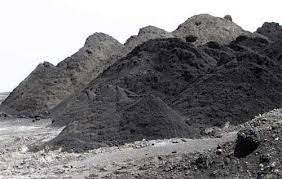21 Feb 2022 Fly ash

Fly ash – Today Current Affairs
- Recently, the National Green Tribunal (NGT) has decided to simultaneously hear eight ongoing cases on ‘fly ash mismanagement’ and accidents registered between 2013 and 2020.
- The NGT’s decision is a significant acknowledgment of the ‘fly ash crisis’ in the country, and may usher in better regulations to govern such infrastructure.
Fly Ash Management and Utilization Campaign: The Hindu Analysis
- In order to streamline monitoring and coordination of all issues regarding management and disposal of fly ash in Uttar Pradesh and Madhya Pradesh, the ‘National Green Tribunal’ (NGT) has directed the Central Government to have Secretaries of the Ministries of Environment and Coal and Chief Ministers of both the States. Directed to constitute a ‘Fly Ash Management and Utilization Mission’ involving Secretaries.
- The mission’s mandate includes preparation of an action plan based on the findings of various committees (constituted to look into the accidents) including bridging the wide gap in storage, handling, management and utilization of fly ash.
- The mission will be financed through a CSR fund, and will also act as an environmental restoration and compensation fund responsible for relief compensation for those affected.
Today Current Affairs
‘Fly ash’
- It is commonly known as ‘chimney ash’ or ‘pulverised fuel ash’. It is a by-product of coal combustion.
Combination of Fly Ash: The Hindu Analysis
- It is made from fine particles released from coal-fired boilers.
- The constituents of fly ash vary greatly depending on the source and composition of the coal being burned in the furnaces, but silicon dioxide (SiO2), aluminum oxide (Al2O3) and calcium oxide (CaO) are sufficient in all types of fly ash are present in quantity.
- Among the minor constituents of fly ash, arsenic, beryllium, boron, cadmium, chromium, hexavalent chromium, cobalt, lead, manganese, mercury, molybdenum, selenium, strontium, thallium, and vanadium are found. Particles of unburned carbon are also found in it.
Today Current Affairs
Health and environmental hazards: The Hindu Analysis
Presence of Toxic Heavy Metals:
- Nickel, cadmium, arsenic, chromium, lead, etc. found in fly ash are all toxic in nature. Their fine and toxic particles get deposited in the respiratory tract and gradually cause poisoning.
Radiation:
- Fly ash emits a hundred times more radiation than nuclear waste, given the same amount of electricity generated from nuclear plants and coal-fired thermal plants.
Water Pollution:
- Incidents of breaking of fly ash channels and the consequent scattering of ash are frequent in India, which pollute water bodies to a large extent.
Impact on Environment:
- Destruction of mangroves from ash waste from nearby coal-fired power plants, drastic reduction in crop yields, and contamination of groundwater in the Rann of Kutch have been well documented.
Uses of Fly Ash: The Hindu Analysis
- As an alternative material for concrete production, sand and Portland cement.
- Ordinary mix of fly-ash particles can be converted into concrete mix.
- Embankment construction and other structural fillers.
- Cement slag production – (as an alternative material in place of clay).
- Stabilization of soft soil.
- Road Construction.
- As brick building material.
Agricultural Use: The Hindu Analysis
- Soil Improvement, Fertilizer, Soil Stabilization.
- To melt the ice on the rivers.
- To control snow accumulation on roads and parking lots.


No Comments